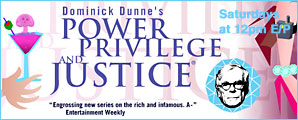A Million Dollar Murder
Circus Trial, Circa '66
The celebrity trials of today have nothing on the circus that began in a
Most of the countrys biggest newspapers and magazines sent their best correspondents to record all the salacious details - among them, Theo Wilson for the New York Daily News, Paul Holmes for the Chicago Tribune and Lewis H. Lapham for the Saturday Evening Post.
Holmes wrote that the trial was lubricated by sex, nourished by sex, varnished by sex. Like many members of the press, he clearly was smitten by Candy.
He wrote, She is remarkable for her poise, her wealth, her tenacious hold on the vestiges of a varnished youth, and the bouncy, unquenchable optimism with which she cheerfully faces an ordeal that will surely tarnish her and could end in a one-way walk to

On dull days, Candy Mossler gave exclusive interviews to this reporter or that, including Holmes. During the six-week trial, Candy treated dozens of reporters to favor-currying exclusives. Richard Gerstein, the top states attorney for the
The big dog was Powers lead lawyer, Percy Foreman, a physically imposing Texan with personality and bluster as outsized as his home state. By Foremans count, he had defended 1,000 accused murderers. Eight in 10 had been acquitted - again, by Foremans count.
He was a master of diversion and flyspecking in the courtroom. In one trial after another, he strove to deflect focus from his client by casting aspersions on some other player�- the accuser, the lover, the police or even society.
He ate juries alive by planting and cultivating seeds of reasonable doubt�- in the style of Johnnie Cochranes mantra at the O.J. Simpson murder trial, If the glove doesnt fit, you must acquit.
Harvey St. Jean and Henry Carr, both veteran criminal defense attorneys, joined Foreman at Powers table. Clyde Woody, a
In that era, just one in 20 people called for jury duty in
Defense attorneys marshaled their preemptory challenges to impanel an all-male jury, apparently believing that men were more likely to appreciate Candys charms.
The 12 men ranged in age from 25 to 63. There were nine whites and three blacks. Seven were Protestants, two Catholics and two Jews. One man, a 47-year-old hairdresser who would be elected foreman, professed no faith. Most came from blue collar professions�- bus driver, construction worker, aircraft mechanic, letter carrier, lumberman and truck driver.

